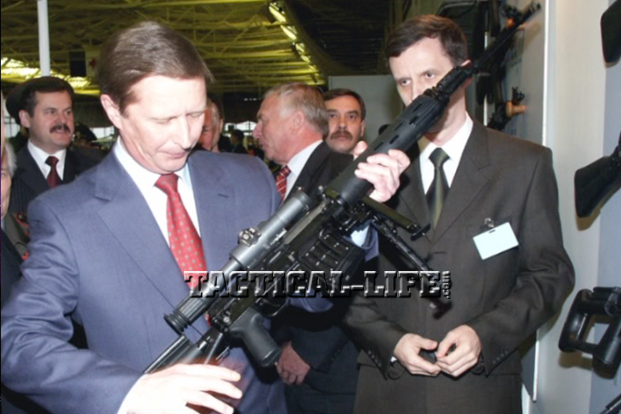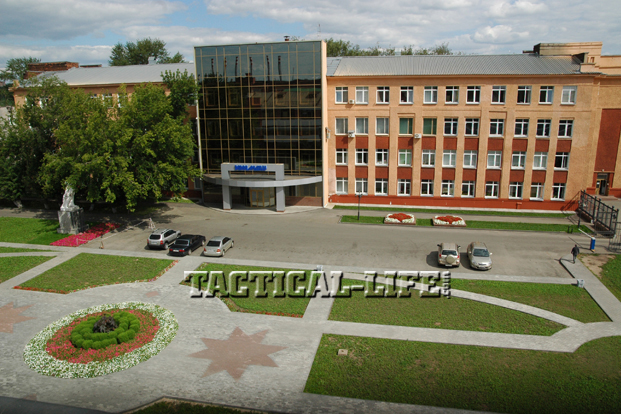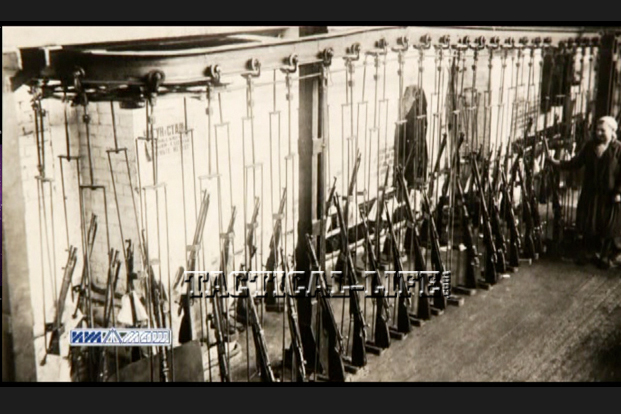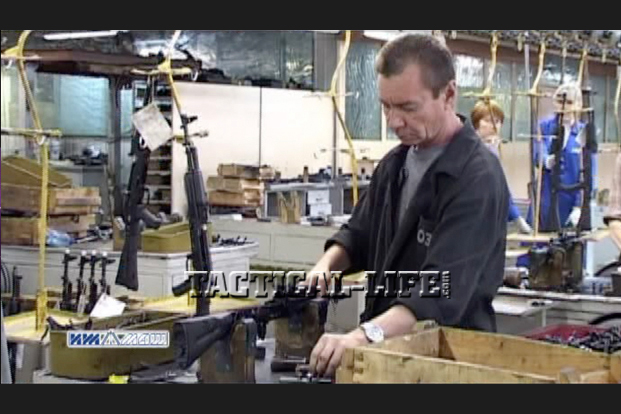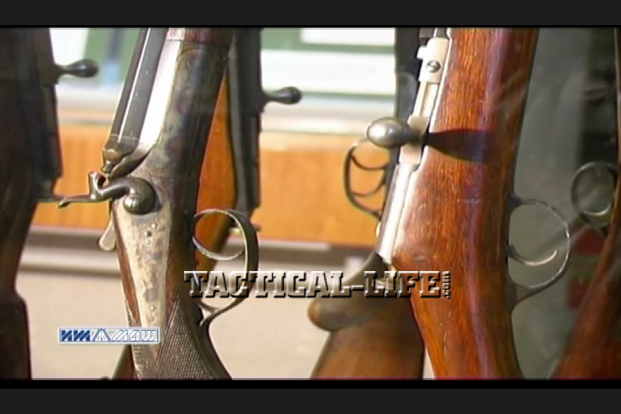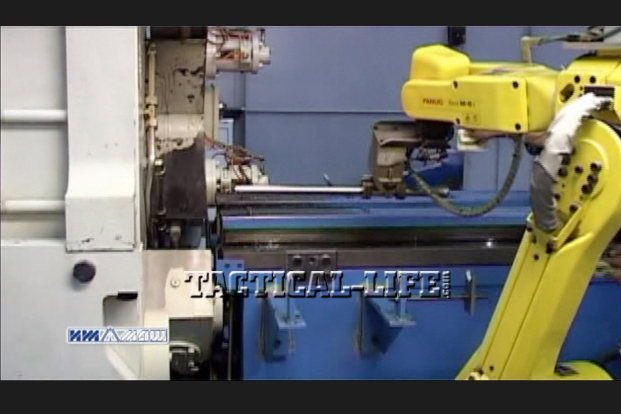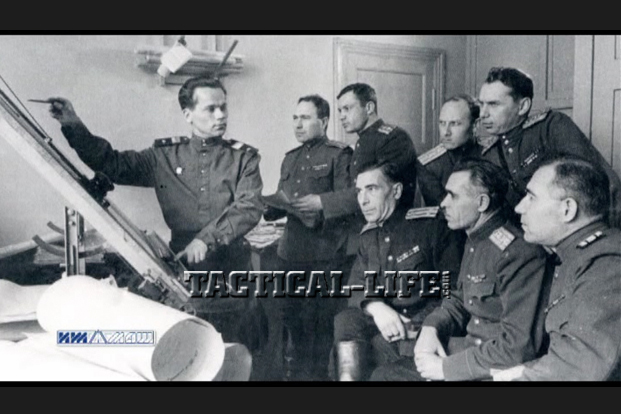For more than 200 years, Russian arms factory Izhmash has served as the nation’s arsenal, manufacturing everything from muskets to rifles, anti-tank weapons, machine guns, pistols and revolvers. Izhmash has been and continues to be one of Russia’s largest arms-makers and its history is a storied one.
Through Napoleon
Izhmash was founded by Alexander I of Russia, who ruled from 1801 to 1825, one of the most chaotic periods in European history. This was the era of another emperor as well, Napoleon I of France, one of the most ambitious conquerors the continent had even seen. Despite Alexander’s attempts at establishing an amicable relationship, war between the two was inevitable. In 1807, French forces defeated a Russian army at Friedland, resulting in the Treaties of Tilsit. It is no great coincidence that 1807 was also the year in which Alexander, no longer trusting the good will of the French, ordered the construction of a weapons factory in Izhevsk near the banks of the Izh river, deep within the Western Urals and nearly 500 miles east of Moscow. Arms production originally started at the Izhevsk Ironworks in 1760 as a private enterprise. However, poor tax preparation and estate planning led to the ironwork being taken over by the government. The factory soon became known by the name it carries today, Izhmash. (The old clock tower that dominates the Izhevsk skyline is the factory’s symbol.) Izhmash’s location proved to be ideal: Napoleon launched a full-scale invasion of Russia in 1812, defeating Russian troops at the Battle of Borodino and conquering Moscow. However, the Russians had burned Moscow before retreating, rather than allowing the French to have the city—Izhmash remained safe. Soon after, Napoleon disastrously led his troops back to France in the midst of winter.
Berdans & Mosin-Nagants
In 1870, Izhmash began producing Russia’s first cartridge-firing bolt-action rifle, the Berdan, which used a 10.75x58R round co-invented by American Hiram Berdan and Russian Colonel Alexander Gorloff. The Berdan was carried by Russian troops through the Russo-Turkish War and served into the Bolshevik Revolution of 1917, although it had been formally replaced in 1891 by the famed Mosin-Nagant rifle. During the revolution, the factory changed hands a number of times, usually resulting in the indiscriminate termination of the previous management. Izhmash soon became a leading producer of Mosin-Nagant rifles and manufactured 1.5 million during World War I. In the Great Patriotic War (WWII), another Western army invaded (despite a non-aggression treaty) Russia and nearly made it to the gates of Moscow. This resulted in an additional 11.3 million Mosin-Nagant rifles being produced. This was more than the U.S.’s entire production of M1 Garands and M1 Carbines during WWII (keeping in mind that Izhmash was also producing significant amounts of other weaponry and equipment, from munitions to handguns).
Advertisement — Continue Reading Below
Kalashnikov’s Semi-Auto
The end of WWII brought Izhmash new fame and distinction in the form of a young veteran tank-mechanic and -driver named Mikhail Timofeyevich Kalashnikov. Wounded in combat and with time to spare during his recuperation, Kalashnikov began to design a new weapon system, a submachine gun. It never gained popularity but did earn him recognition as a designer. He later developed an autoloading rifle, which eventually evolved into the most prolifically produced and well-recognized rifle in world history, the AK-47. From 1947 onward, Izhevsk became Kalashnikov’s home and Izhmash his employer. He worked there for 60 years until his retirement, developing additional weapon systems such as the AKM, which uses a stamped-sheet-metal receiver; the RPK, which is a beefed-up AK that serves as a squad automatic weapon; and the PK belt-fed machine gun, which uses the 7.62x54R cartridge. Outside the factory there stands a statue of a young Kalashnikov, in recognition of his long and dedicated service to his nation. Worldwide upwards of 100 million AK rifles have been made, and Kalashnikov never received one red cent in royalties. If you want a real Kalashnikov, then there is no substitute for one produced by Izhmash. Over the ensuing decades, the factory produced its fair share of AKs and continues to do so today.
After The Cold War
The end of the Cold War proved to be a challenging period for Izhmash, with a significant decline in demand and increased competition from overseas AK manufacturers. The factory had previously expanded production into cars and motorcycles, which it still manufactures. Now, Izhmash is part of a state-owned holding company, Russian Technologies, but is still expected to turn a profit. A lengthy New York Times article revealed Russian Technologies’ strategy for doing so, which involves selling guns to Americans. According to author Andrew E. Kramer, “… American consumers are now buying about the same number of Kalashnikov-style weapons… as the Russian army and police.” Kramer explains, “About 70 percent of the factory’s output is now civilian rifles, up from 50 percent two years ago. Of the civilian arms, about 40 percent are exported to the United States.” This civilian production also includes sizable numbers of Saiga shotguns, which are based on the AK design and usually modified back to a more tactical configuration once they’re in the U.S. Izhmash continues to build military rifles, including all variants of the AK, and is developing the new AK-12, as well as submachine guns, sniper rifles and automatic weapons. Izhmash’s selection of “civilian” models is equally as extensive and includes specialized Olympic competition models, some of which are for the biathlon.
21st Century
In early 2012, Izhmash further expanded their outreach to American shooters by appointing RWC Group LLC as their exclusive importer. This partnership is already providing dividends in the form of new designs and features. Once rifles and shotguns have been imported, they can be domestically altered from their sporting configuration to more feature-laden models. RWC has already announced that they will add tactical enhancements from Command Arms, which can include high-quality, battle-tested gear, pistol grips, stocks, rail handguards, and so on. The complete and ever-expanding product line is available for viewing on RWC’s website and offers something to most every shooter. Traditional .22 LR target and hunting rifles are available, as well as centerfire bolt-action rifles in .223, 5.6x39mm, 7.62x39mm, .338 Lapua Mag, 7.62x54R, and .308. RWC also offers 12-gauge shotguns.
Also offered are AK-pattern rifles. They feature rock solid reliable semi-auto operation, rotary bolt and long-stoke gas piston system, hammer forged chrome lined barrels and original AK sights. These rifles are available in .223, 7.62x39mm, 5.45x39mm and .308 and you can also choose between 16-inch and 21-inch barrel lengths. The Saiga shotgun offerings are particularly exciting. Who doesn’t want a magazine-fed, semi-auto shotgun? RWC is offering a new version with a thumbhole laminated wood or polymer stock similar to those found on Dragunov sniper rifles, with an accompanying wood, vented handguard. The options here are also expansive, including 19- or 24-inch barrels; .410 bore, 20 gauge or 12 gauge models; and wood or polymer stocks. Unlike traditional AKs, these Saiga shotguns can be had with extended magazine wells, which expedite reloading. Optics options also abound with either traditional V-notch sights, bead sights or receiver- or side-mounted rails. Factory-made two-, four-, five- and eight-round magazines are available.
Still, these shotguns share the same reliable features as their AK-rifle counterparts and will accept choke tubes for those who need them. The Saiga guns have chrome-lined barrels, which extends service life and resists corrosion. The nicely sized triggerguards allow for easy gloved use.
Advertisement — Continue Reading Below
Wrap Up
All of these rifles and shotguns are made with state-of-the-art production techniques and extensive quality control. And the workers at Izhmash maintain their tradition of personalized work. The wooden stocks on target and hunting rifles are hand-cut and -finished, and every firearm undergoes individual inspection and testing before it leaves the factory. When it comes to firearms, “Made in Russia” carries a lot of weight. For more information, visit rwcgroupllc.com or call 215-949-9944. ★
